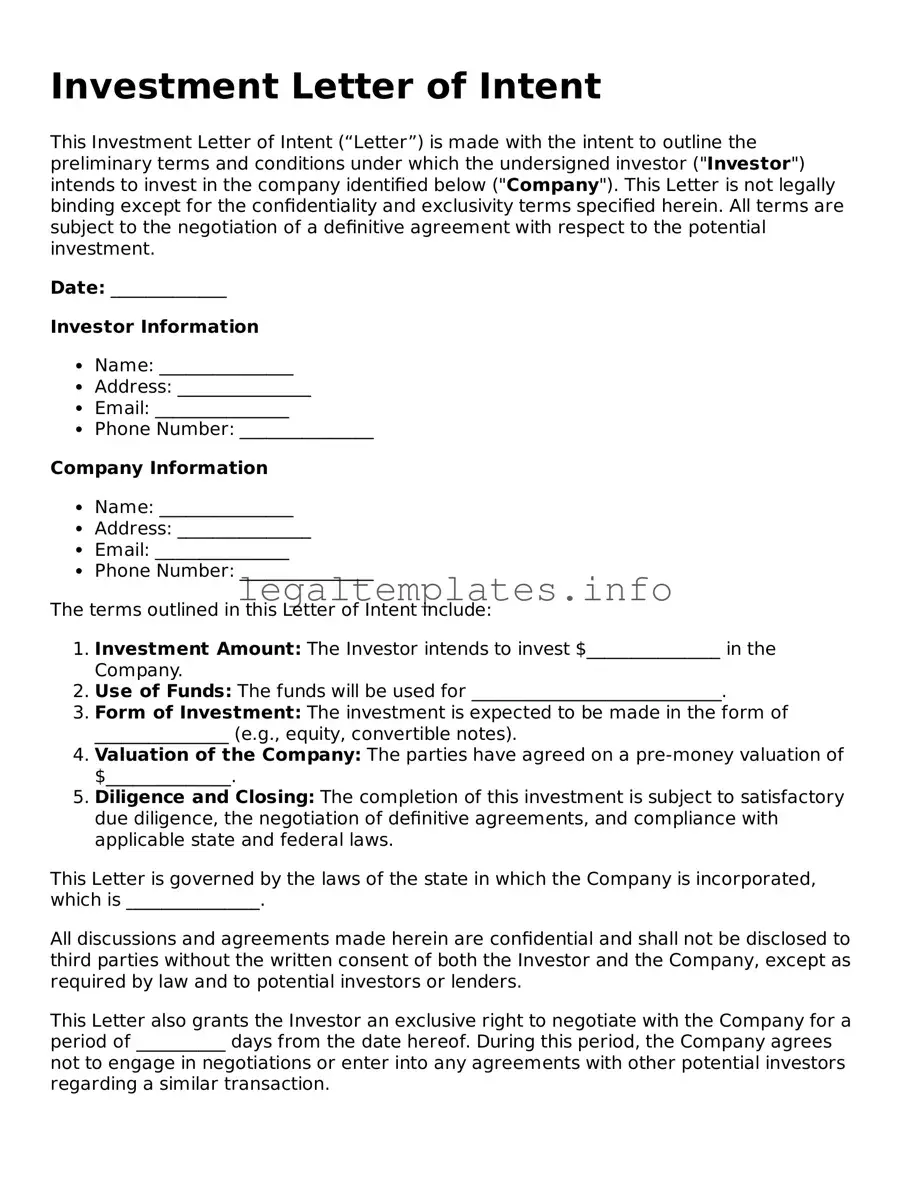What is an Investment Letter of Intent?
An Investment Letter of Intent (LOI) is a non-binding document that outlines the preliminary agreement between an investor and another party (often a company or startup) before a formal, legally binding agreement is made. It highlights the key terms and conditions of the investment, including the investment amount, structure, and any specific conditions that must be met before the final investment is made.
Why use an Investment Letter of Intent?
Using an Investment Letter of Intent serves several purposes. It allows both parties to outline their expectations and understandings before entering into a complex and binding investment agreement. This can help avoid misunderstandings and provide a roadmap for the future formal agreement. Additionally, it can signal serious intent to other stakeholders, such as potential co-investors or partners, that the deal is proceeding.
Is an Investment Letter of Intent legally binding?
Generally, an Investment Letter of Intent is not legally binding, especially regarding the commitment to proceed with the investment. However, certain sections, such as confidentiality clauses, exclusivity agreements, or governing law clauses, may be binding. It is crucial to clearly specify which parts, if any, are intended to be legally binding.
What are the key elements of an Investment Letter of Intent?
The key elements typically include the identity of the parties involved, the proposed investment amount, the structure of the investment, any conditions that must be satisfied before finalizing the investment, the timeline for due diligence and closing the deal, confidentiality obligations, and often a clause stating that the letter is not legally binding. Specific binding clauses may also be included, as agreed upon by both parties.
How detailed should an Investment Letter of Intent be?
The level of detail in an Investment Letter of Intent can vary. In some cases, parties may prefer a more detailed document that covers all aspects of the proposed investment and agreement in depth. In other situations, a high-level overview of the key terms and conditions may be sufficient. The choice depends on the complexity of the investment and the preferences of the parties involved.
Can an Investment Letter of Intent be terminated?
Yes, since it is generally non-binding, either party can typically walk away from an Investment Letter of Intent without legal consequences, unless they have violated any binding sections of the letter, such as confidentiality clauses. The terms of termination should be specified in the letter to avoid any confusion.
How does an Investment Letter of Intent differ from a term sheet?
An Investment Letter of Intent and a term sheet serve similar purposes but differ mainly in format and details. A term sheet is often a bullet-point document summarizing the key financial and legal points of the investment, while an LOI is typically more detailed and descriptive. Both outline preliminary agreements before a formal deal but may be used at different stages of negotiation.
Can negotiating an Investment Letter of Intent impact the final investment agreement?
Negotiating an Investment Letter of Intent can indeed impact the final investment agreement. It sets the stage for the detailed negotiations to come and can help identify and resolve potential issues early in the process. Well-negotiated LOIs can lead to smoother and more efficient final agreement negotiations.
Should legal counsel be involved in drafting an Investment Letter of Intent?
Yes, involving legal counsel in drafting an Investment Letter of Intent is highly recommended. Legal professionals can ensure that the document accurately reflects the intentions of the parties, addresses key legal issues, and specifies which, if any, sections are legally binding. This can prevent future disputes and misunderstandings, saving time and resources for both parties.
